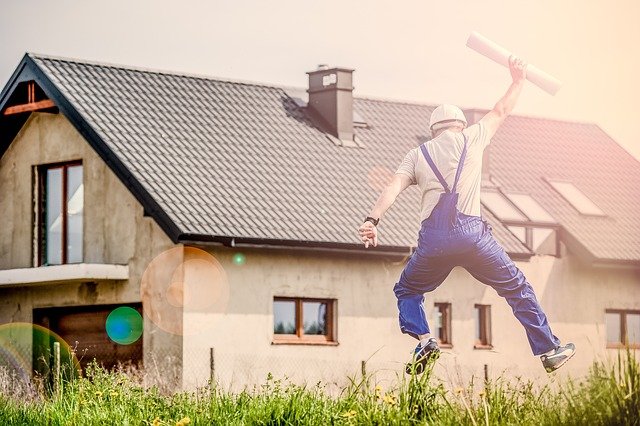What Foreign Buyers Should Know About Purchasing Abandoned Homes in Italy
The allure of owning a centuries-old stone cottage in the Italian countryside or a charming apartment in a historic village has captivated foreign buyers for decades. Italy's abandoned home phenomenon has gained international attention in recent years, with the famous "€1 house" schemes making headlines worldwide. However, the reality of purchasing and restoring these properties involves much more than the initial bargain price suggests. For foreign investors considering this unique real estate opportunity, understanding the true costs, legal requirements, and practical considerations is essential before making the commitment.

How Much Does It Really Cost to Buy an Abandoned Property in Italy?
The advertised prices for abandoned homes in Italy can be misleading. While the €1 (approximately $1.10) schemes are genuine, they represent just the starting point. These properties are sold through special municipal programs designed to revitalize depopulated towns and villages. Beyond the symbolic purchase price, buyers typically encounter:
-
Notary fees and taxes: Generally 2-3% of the declared property value
-
Required bank guarantee: €5,000-€10,000 ($5,500-$11,000) to ensure renovation work begins
-
Renovation commitment: Legal obligation to submit renovation plans within 2-3 months and complete work within 3-5 years
-
Property registration fees: €2,000-€3,000 ($2,200-$3,300)
For more conventionally priced abandoned properties outside these schemes, purchase prices typically range from €5,000 to €50,000 ($5,500-$55,000) depending on location, size, and condition.
Key Factors That Affect the Price and Legal Process for Foreign Investors
Foreign buyers face several factors that can significantly impact both costs and legal procedures when purchasing abandoned Italian properties:
-
Citizenship and residency status: EU citizens face fewer restrictions than non-EU buyers, though recent legislation has simplified the process for most foreigners.
-
Property location: Homes in tourist-friendly regions like Tuscany or coastal areas command higher prices than those in remote inland villages, even in poor condition.
-
Historical designation: Properties with historical significance often come with strict renovation guidelines from the Sovrintendenza delle Belle Arti (Fine Arts Authority), potentially increasing restoration costs by 30-50%.
-
Infrastructure access: Properties lacking basic utilities or road access will require significant additional investment beyond the structure itself.
-
Title clarity: Many abandoned properties have complex ownership situations due to multiple heirs or incomplete documentation, requiring legal intervention to secure clear title.
The legal process typically takes 2-6 months from offer to completion, with foreign buyers strongly advised to hire a local attorney (€2,000-€5,000) who specializes in real estate transactions.
The True Cost of Restoration: Beyond the Purchase Price
Restoration costs represent the most significant financial commitment when purchasing an abandoned Italian home. These expenses vary dramatically based on:
-
Property condition (structural integrity, roof status, etc.)
-
Size of the property
-
Quality of materials and finishes desired
-
Local labor costs
-
Accessibility of the site
On average, comprehensive restoration costs range from €700-€1,500 per square meter ($70-$150 per square foot), meaning a typical 120-square-meter (1,300 square feet) property might require €84,000-€180,000 ($92,000-$198,000) to renovate fully.
Specific renovation elements commonly include:
-
Structural reinforcement: €20,000-€40,000
-
New roof: €15,000-€30,000
-
Plumbing and electrical systems: €15,000-€25,000
-
Windows and doors: €10,000-€20,000
-
Flooring and interior finishes: €20,000-€40,000
Comparison of Purchasing Methods and Typical Costs
| Acquisition Method | Initial Purchase Cost | Required Deposit | Typical Renovation Cost | Total Investment Range |
|---|---|---|---|---|
| €1 House Schemes | €1-€10 | €5,000 guarantee | €700-€1,500/m² | €60,000-€180,000 |
| Direct Purchase (Poor Condition) | €5,000-€25,000 | 10-30% of price | €700-€1,200/m² | €70,000-€150,000 |
| Direct Purchase (Habitable) | €30,000-€100,000+ | 10-30% of price | €300-€700/m² | €60,000-€180,000 |
| Semi-Restored Property | €80,000-€200,000+ | 10-30% of price | €200-€500/m² | €100,000-€250,000+ |
Prices, rates, or cost estimates mentioned in this article are based on the latest available information but may change over time. Independent research is advised before making financial decisions.
What to Consider Before Investing in an Abandoned Home Abroad
Beyond financial considerations, prospective buyers should evaluate several practical aspects:
-
Time commitment: Most restoration projects require frequent on-site presence and decision-making. Consider how often you can realistically visit during the renovation process.
-
Language and cultural barriers: Working with local contractors, navigating bureaucracy, and managing utility connections can be challenging without Italian language skills.
-
Long-term purpose: Determine whether the property will be a vacation home, permanent residence, or income-generating investment, as this affects renovation priorities and budget allocation.
-
Local community: Some abandoned properties are in villages with dwindling populations and limited services. Research the area’s amenities, transportation options, and future development plans.
-
Climate and environmental factors: Many abandoned properties are in mountainous or remote areas with challenging weather conditions that impact both restoration work and future maintenance.
-
Ongoing costs: Property tax (IMU), utility connections, maintenance, and potentially hiring caretakers for periods of absence represent continuing financial commitments.
Creating a Realistic Budget and Timeline
Successful restoration projects typically follow a carefully planned approach:
-
Professional assessment: Hire a geometric (building surveyor) to evaluate the property’s condition before purchase (€500-€1,500)
-
Phased renovation plan: Work with an architect to develop a comprehensive plan that can be executed in logical stages (€3,000-€8,000)
-
Contingency budget: Allow an additional 15-25% beyond initial estimates for unexpected issues
-
Timeline flexibility: Most successful renovations take 12-24 months to complete, with delays common due to permitting, weather, and contractor availability
While the journey from abandoned ruin to dream Italian home involves significant investment, careful planning, and patience, many foreign buyers find the process ultimately rewarding. The key to success lies in thorough research, realistic budgeting, and approaching the project with a genuine appreciation for both the challenges and the unique opportunity to breathe new life into a piece of Italian history.




